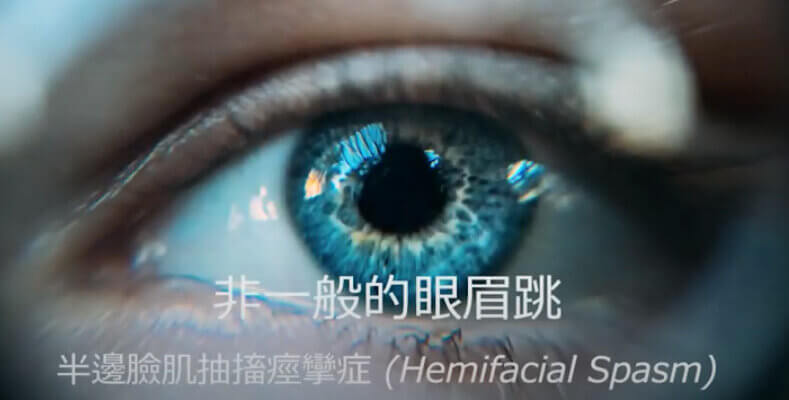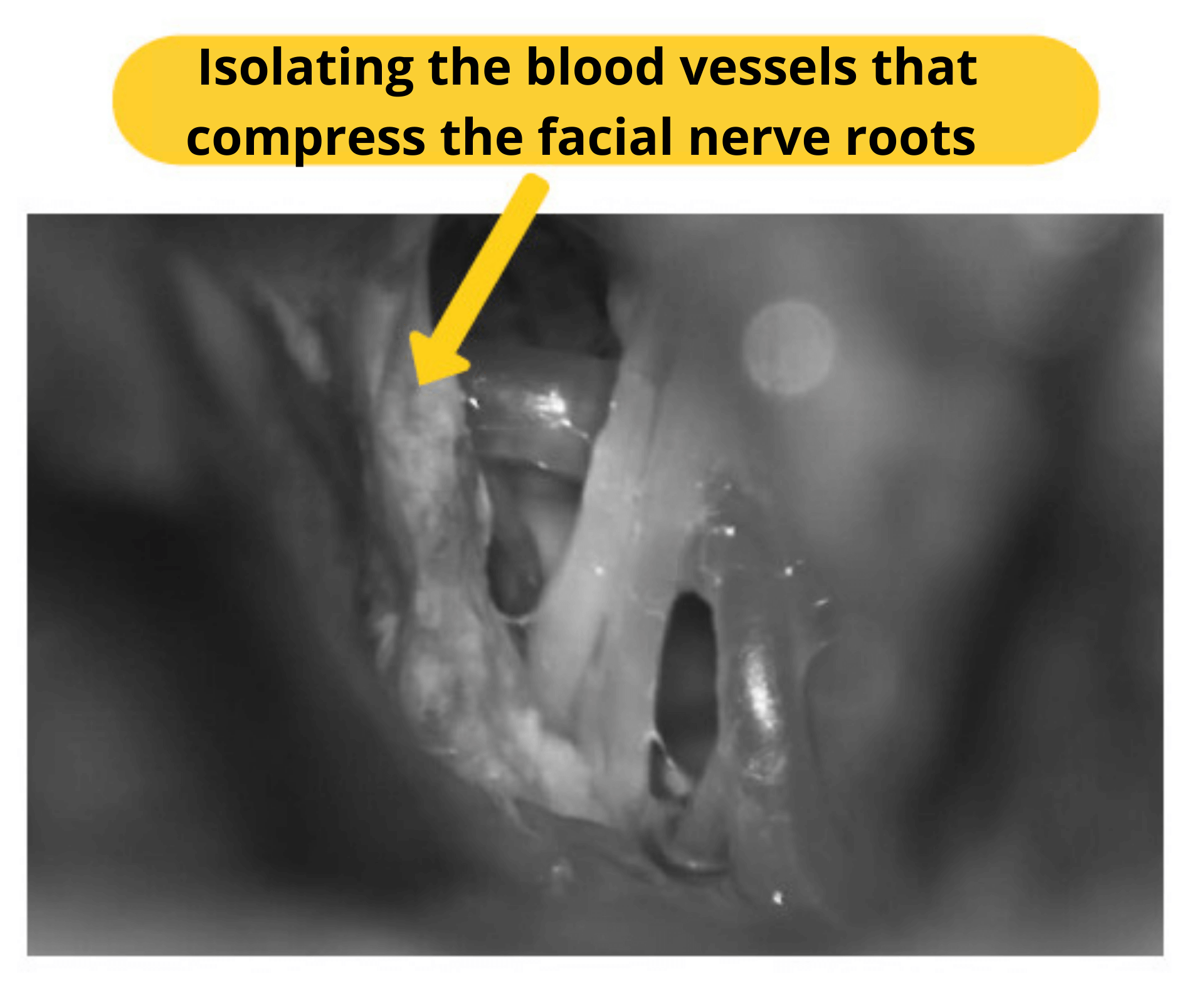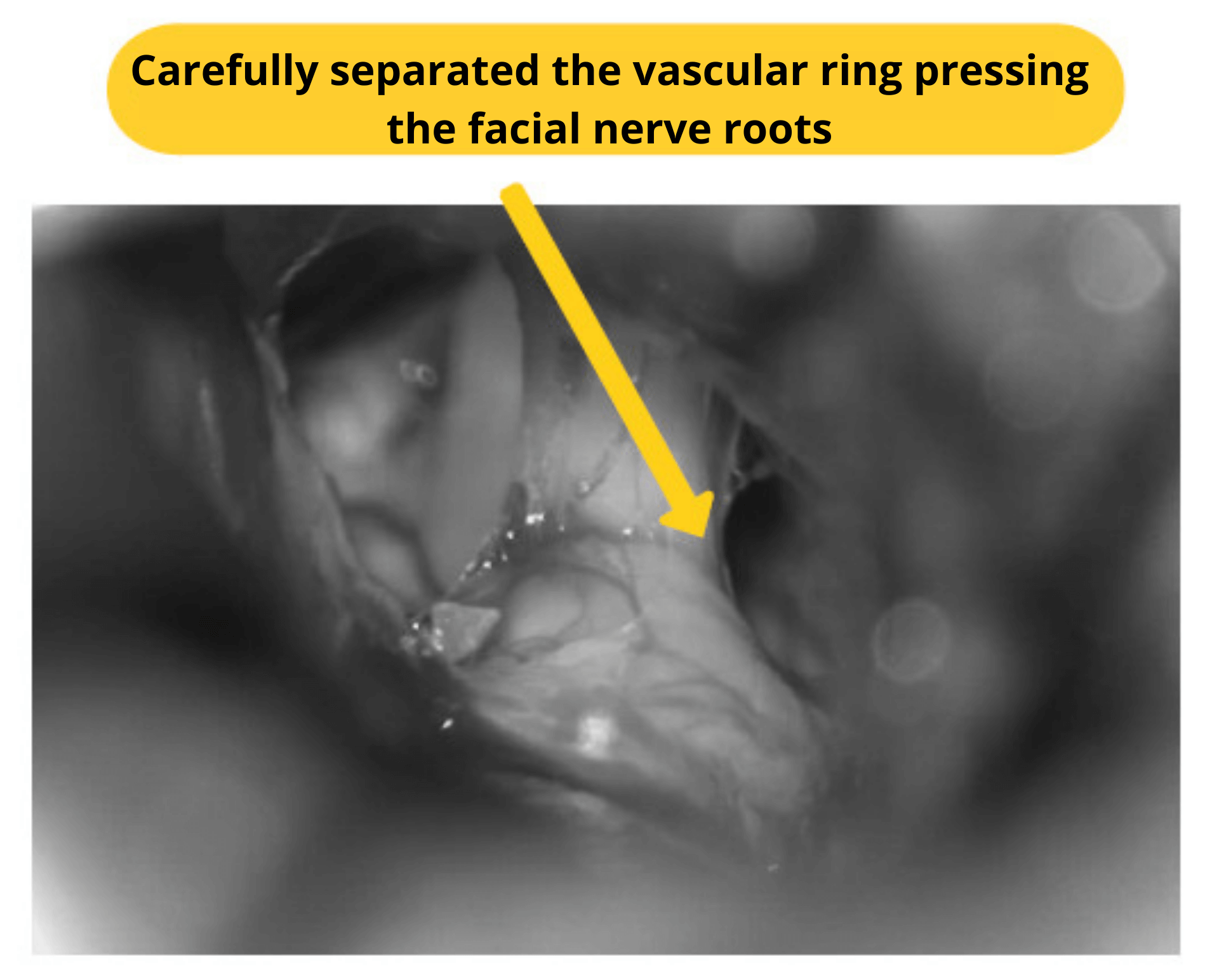
Many people have experience of eyebrow twitch, but unusual eye twitch may have other causes. Hemifacial spasm is a neuromuscular disorder. The patient has irregular, involuntary contraction and twitching of one eyelid or facial muscles. Because it usually occurs on either the left or right eye, it is also called “half-facial spasm."
Occasionally the patient’s eyebrows or facial muscles twitch
The facial muscles of the human body are controlled by the brain, the seventh cranial nerve starting from the brainstem at the bottom of the skull (the facial nerve). On the underside of the skull, 5 pairs of facial nerves are used to control the facial muscles. Hemifacial Spasm (HFS) is more common in patients in middle age, and the prevalence of women is higher than men. The cause is that the neurons in the facial nerve are externally compressed or stimulated, which causes the nerves to abnormally excite the signals. It is like a short circuit of a wire that causes the eyebrows or facial muscles of the patient to twitch involuntarily, and both faces are simultaneously having palsy.
At the beginning of the disease, the patient’s eyelids or facial muscles will twitch or spasm uncontrollably continuously, which makes people feel uncomfortable. As the condition gradually deteriorates, there may be eyebrows twitch, eye blinks, jitters at the corners of the face and strange expressions on one side of the face, which not only affects a patient’s life, social, and interpersonal relationships, but also affects the patient’s mood.
Common causes of facial nerve compression
Cerebrovascular compression of facial nerves is the main cause of most facial spasms. The vertebral arteries or microcirculatory vessels of the brainstem are varicose due to cholesterol or degeneration. Or it may be based on other reasons, such as inflammation that caused blood vessels to adhere or press on the facial nerve and cause compression. In addition, tumors are also common causes. For example, acoustic neurofibromas, cholesteatoma, hemangioma, meningioma or dermoid cysts, will compress the facial nerve and trigger facial pain.
Diagnostic methods include:
Facial muscle EMG is used to measure and record the electric wave activity of facial muscles in response to relaxation and contraction.
Magnetic resonance imaging (MRI) is used to clarify the cause of facial nerve compression.
Common treatment options
Medication
The drug has a partial effect on patients with mild symptoms at the beginning of the disease. Mild facial spasm can be relieved with sedatives or muscle relaxant medication. The doctor provides medicine for 1 to 2 weeks. If the patient does not want to undergo surgery, or the patient is too old, or if other diseases are not suitable for surgery, medicine is the first choice, but the patient must understand the medicine only treats the symptoms but not the root cause.
At the same time, although two-thirds of patients are effectively relieved in the initial stage of taking the medication, they are likely to develop resistance after taking the medication for a long time, and the medicine gradually becomes ineffective. In addition, the medicine may have side effects such as confusion, drowsiness, dizziness, unsteady gait or unsteady walking, or severe allergies. Some patients may not be able to use the medication because of the side effects.
Botox injection therapy
Botox injections into the facial muscles are very effective. Botulinum toxin is a neurotoxin produced by anaerobic bacteria. It can block the nerve conduction at the junction of nerves and muscles, making muscles unable to contract, and can effectively reduce involuntary muscle contractions, which is about 90% of patients It is effective.
Although botulinum toxin injection is safe, some minor side effects may occur, such as bruising at the injection site due to subcutaneous bleeding, and patients may also have drooping eyelids, double vision, tearing or dry eyes, and drooping corners of the mouth.
These symptoms usually improve and disappear within 1 to 2 weeks. But botulinum injection therapy is not permanent. It needs to be injected every 3 to 6 months. It is another non-radical treatment that treats the symptoms rather than the root cause.
Minimally Invasive Neurosurgery
Retromastoid Craniotomy for Microvascular Decompression for the Facial Nerve is currently the most effective and thorough radical cure for facial muscle spasm. Microvascular decompression surgery is a very sophisticated and mature minimally invasive neurosurgery. It has been clinically used to treat facial muscle spasm, trigeminal neuralgia, glossopharyngeal neuralgia and other cranial nerve diseases for nearly 60 years.
Neurosurgeons will use a microscope to perform surgery on the skull base behind the ears of patients under general anesthesia. The surgery is not performed inside the brain, but uses the gap between human tissues and the subarachnoid space between the brain tissue and the skull surgery is performed, so there is no need to cut any cranial nerves. During the procedure, the doctor will isolate the blood vessels that compress the facial nerve roots, and permanently block the blood vessels and nerves with artificial sponge (Teflon) to remove the cause of the nerve. The cure rate of surgery is more than 80 to 90%, the recurrence rate is about 10%, and the risk of serious complications (such as hearing loss) is 2%.


Case Sharing
38-year-old Ms. Zhang is a civilian worker who starts noticing her right eyebrow and eyelid started twitching involuntarily. After seeking help by a family doctor, the twitching that lasted for 6 months did not improve, but instead, showed signs of deterioration. The twitching also extended to other facial muscles which affected her daily routine, social life, and her mood. Ms. Zhang later consulted a neurologist who suggested that she should try botox injection therapy. However, after careful consideration, Ms. Zhang wanted to find a truly once-and-for-all solution and did not want to inject botox once every 3 to 6 months. Hoping to cure the problem, Ms. Zhang eventually consulted a neurosurgeon.
Under MRI medical imaging, the neurosurgeon diagnosed that the facial nerve on Ms. Zhang’s condition was compressed by a capillary which caused the facial nerve to involuntarily send out wrong nerve signals, causing the facial muscles to twitch involuntarily. After analyzing the treatment plan in detail and explaining the pros and cons of the operation, Ms. Zhang decided to use it to treat the problem.
Under the minimally invasive neurosurgery, the neurosurgeon discovered that Ms. Zhang’s nerve and blood vessels may have been inflamed, causing the blood vessels and nerves to stick together. Under the 4 hours operation, the doctor carefully separated the vascular ring pressing the facial nerve roots, eliminating the cause of the nerve twitching. The neurosurgeon then used artificial sponge (Teflon) to permanently block the nerves and blood vessels. During the operation, the neurosurgeon must also carefully protect Ms. Zhang’s other brain nerves and blood vessels, such as the auditory nerve, to avoid the risk of deafness. After the operation, Ms. Zhang’s eyelid and facial nerve twitching disappeared immediately, and she went home to rest. For many years, she did not need to take any medication or get any injection treatment, the problem of eyelid and facial spasm has never recurred, and the disease has been permanently cured.




 Book an Appointment
Book an Appointment


